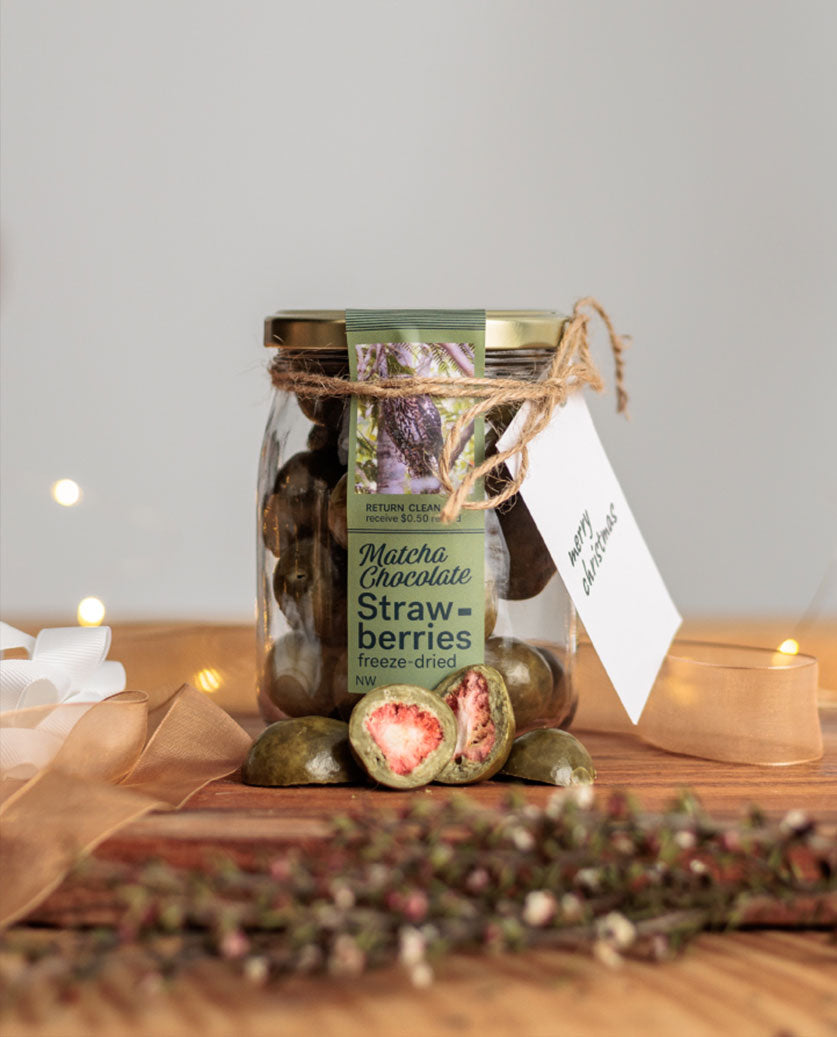Sustainable Living with Kate Hall from Ethically Kate
Meet Kate, our sustainable friend, eco-lifestyle blogger of ‘Ethically Kate’, educator and Instagram inspirer.

Photography Credit: Nectar Photography
She’s the ghost writer behind many sustainably minded social media platforms and blogs, and is on a mission to encourage a sustainable lifestyle that is accessible for everyone. Kate and her husband, Tim, strive to live a low waste and planet-focused lifestyle, smiling while doing it and enjoying life by the beach with their pup and birds. Kate is passionate about educating the younger generation, and promoting a conscience and kindness attitude for both our global community and environment.
1. When did you first get introduced to the idea of sustainability?
I grew up in an environmental and socially conscious family, so I think it was always instilled in me! I started life in cloth nappies. As a family we would always visit second hand shops, wear hand-me-downs, repair things, compost, and give back to those less privileged. It was in 2015 when I watched the True Cost documentary that I linked my love for fashion with sustainability. Then my sustainable wardrobe turned into a sustainable pantry, and it continues to snowball today.
2. What are three things everyone can do today to make a difference?
-
Consider every single item as a valuable resource. Don’t think about its monetary cost, rather its value to people and animals on the planet.
-
Live with less! Whatever that looks like for you. Living with less means life is more enjoyable, there is less to shuffle around in your home, maintain, and less strain on the environment to create everything.
-
Be kind. This is the most important one. Kindness leads into all sustainable actions, so it should be the forefront and biggest lesson for everyone trying to make a difference.

3. It can be difficult when travelling to consistently be waste-free, do you have any tips around this?
Put carry bags in all corners of your life: car, pantry, front door, handbag. Create a little travel kit too – and take that everywhere with you, even if you don’t expect to eat out. Say no: when travelling you can be given lots of things that you don’t need, or are simply free – so you accept. Just say no, stick to what you have with you.
Sometimes washing your reusables is difficult too – if I haven’t had a chance to wash mine at the accomodation, I ask the next cafe / restaurant I’m using it at, to wash it for me. They always oblige. Travelling with light weight reusables is also important. If you’re a regular traveller, choose ones that are wooden or sugar cane – something light for your travel bag.
4. What’s a typical breakfast, lunch and dinner go-to for you?
Usually I make my own bread, but if I haven’t had the chance or I’m sick of eating it every morning, I have two boiled eggs (from a farm I have visited – the only eggs I buy). An avocado with nutritional yeast sprinkles and tomato is yum too.
When I make dinner, I make enough for 3-4 meals so that I have lunch the next day all ready. This saves energy/water/dishes from cooking things at lunch time, and saves a lot of time too. At dinner time, my husband and I eat quite simple meals. Because we try not to buy anything in plastic, it’s unprocessed foods and often veggies from our garden. We eat (home kill, organic, free-range) meat about 3 times a week, though Tim travels a lot and I generally eat vegetarian when he’s away. A favourite of ours is egg fried rice – Tim makes it, he’s the fried rice expert!
Our favourite drink with lunch and dinner is my homemade kombucha, using the tea I buy from GoodFor. It’s the best – particularly the mango magic. Snacking is how I get through some big work days, and the dried fruit from GoodFor is my absolute favourite for that. Dried mango cheeks, chocolate covered strawberries (if I’ve been good) and I discovered the dried kiwifruit last time I visited. Meal prepping is also excellent for reducing waste. I often freeze meals to avoid eating out when we’re tired and haven’t had time to make a meal.

5. What is your idea of the perfect package-free pantry?
Use the containers and jars that you already own. The ‘perfect pantry’ sometimes looks like a Pinterest board, but really, that’s not always the best option. I use old ice cream containers, random jars, broken Tupperware etc. – this has saved me so much money, and works for me! If you are after really big jars, GoodFor have a range that go right up to a 3.8L jar, although I’ve never had to purchase these myself, the big ones would be a great option if you want to store things in bulk. I also avoid using any packaging, even things that can be recycled or composted. Although those are better than packaging that has to go to landfill, it’s still a resource that took energy to create. I’m trying my best to slowly swap those things out e.g. making my own tomato pasta sauce to go with my favourite gluten-free pasta I get from GoodFor.
6. Favourite ingredient from GoodFor to cook with?
The teas I use in my homemade Kombucha! I love the ginger lemon and mango magic!

7. Any last pieces of advice or intentions for 2020 you want to share?
In 2020, I’m getting rid of the idea that we have to live up to a standard or ‘get anywhere’. There is no end place we’re all moving towards – we should stop calling it a ‘journey’ because that assumes we will get somewhere! In 2020, I hope to inspire others to do whatever they can, wherever they are. I don’t want anyone to be scared to make small eco steps because they are scared someone will point fingers at them for what they are NOT doing. I’m looking forward to watching judgement drop, and kindness grow. I am also excited for more legislation and system change. Although individual actions definitely help we also need the government and businesses to step up. I feel like there is much more talk about this now, so I’m excited for that!
If you want to hear more from Kate, you’ll find her blog here. You can also read previous GoodFor blogs here. Thank you for reading – please let us know if you enjoyed this blog and want to see more of this!
 GoodFor
GoodFor

